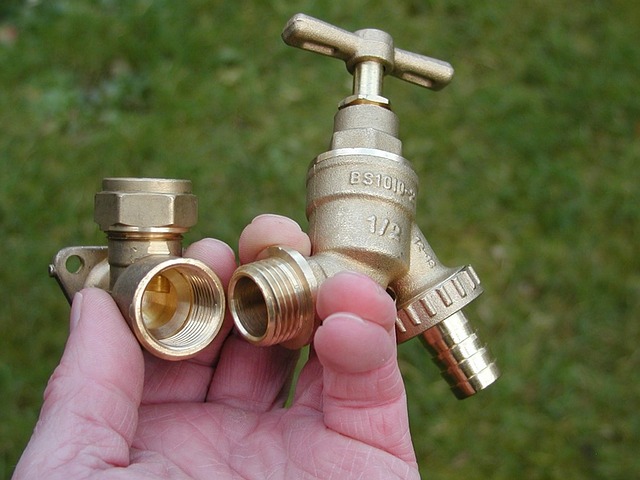Before your plumbing system develops serious issues and grinds to a slow halt, it may exhibit some warning signs. Responding to these emerging issues can mean preventing a more serious plumbing disaster. The value of regular maintenance of various appliances and fixtures cannot be overstated. While intricate repairs and installation should be left to the professionals, there are some DIY maintenance tips you can implement on your own.

Avoid non-flushable wastes and inspect for running toilets
Some common problems associated with toilets include clogged sewer lines and continuously running toilets. Start by being careful about what you flush away. The EPA urges Americans only to flush away toilet paper. However, many people flush disinfecting wipes. They don’t break down as well as paper, resulting in clogs in home internal plumbing systems and wastewater collection systems. Non-flushable wastes also contribute to potential sewer backup that may pose a danger to public health.
The second maintenance tip has to do with the toilet and ensuring that all its internal mechanisms such as the flapper, float, and fill tubes are working properly. If there’s an issue with the internal flushing mechanisms, the toilet may constantly run water.
A quick tip to check for a running toilet is to add about five drops of food coloring into the toilet tank. Inspect the bowl after 30 minutes for any signs of the food color. You can similarly turn off the shut-off valve when the toilet tank is full. After 30 minutes, check to see if the tank has emptied out.
Use hot water to flush drains and avoid soap scum for bathroom drains
One of the most common issues plumbers deal with is slowly draining drains. You can implement a proactive approach to preventing clogs and save a lot of money on drain clean-up services.
With kitchen sinks, be very careful of food scraps and always use the strainer basket. Having a garbage disposal unit is not a license to carelessly put down all items. Avoid items such as coffee grounds, eggshells, grease fat, and oil, produce stickers, cotton balls, paper towels, and medications.
You can help prevent clogged bathroom drains by cleaning up hair and disposing of it separately. Try synthetic or liquid soap that prevents soap scum. You can routinely cleanse all drains by pouring down hot water once per week. A mixture of vinegar and baking soda can also work.
Regularly flush the water heater tank to remove sediment build-up
Water heaters are intricate appliances and performing maintenance can be intimidating for many. First, learn all about your particular brand of water heater. Do you have a tankless or storage tank water heater?
With tank water heaters, many homeowners can flush the tank to remove any sediment buildup. A clean tank is less prone to leaks and discolored water. You can also closely monitor the water heater for abnormalities, such as strange noises or irregular water temperatures.
You should ideally call an emergency plumber from teamemergencyplumber to check up on the water heater system at least once per year. A certified plumber can perform this checkup as part of their routine maintenance around your home.
Know where your mains shut off valve is located
Many homeowners don’t know the location of the main water shut-off valve. It’s important to have this knowledge on hand. If you have an active situation involving a broken or burst pipe, you will need to quickly shut off the water supply to the home’s internal plumbing system.
The possible locations of the shut-off valves include the utility area, near water heaters, front yard near the curb, basement, or under the kitchen sink. You will generally have two types of shut-off valves, a ball valve or gate valve. Test to see if yours is working.
Don’t ignore minor plumbing issues such as leaking faucets
Many homeowners may simply choose to ignore leaking faucets, showerheads, or fixture shutoffs. Now, this is not the right approach because they may waste a lot of water. Rusty fixture shut-offs pose a particular danger as they can break when you’re turning them off or on.
Leaks may be corrected by tightening connections. You can look into the possibility of replacing leaking fixtures. If you cannot do this on your own, it will be important to call a plumber.
Keep your pipes from freezing during winter
Frozen pipes excerpt enormous internal pressure resulting in the rupture of pipes from the inside. Pipes may freeze if the temperature falls below 20° Fahrenheit.
Insulated pipes may have a better chance of beating the cold, but it’s quite possible that your pipes don’t have insulation, particularly if you live in a relatively area without harsh winters and frequent cold snaps.
Some best recommendations to keep pipes from freezing include:
- Set the temperature at 55 degrees Fahrenheit when you’re not at home.
- Open interior doors to have a persistent indoor temperature.
- Leave cabinets doors open to also allow warm air to recirculate.
- Leave pipes on a slow tickle if temperatures fall below 20 degrees Fahrenheit.
- Inspect your home for any cracks and openings that may leave internal systems exposed.
Bottom Line
Plumbing systems are not immune to failure, but you can certainly extend their life by carrying out regular maintenance, spotting problems before they emerge, and providing timely interventions. It will be invaluable to request an annual inspection covering all aspects of your residential or commercial plumbing system.






